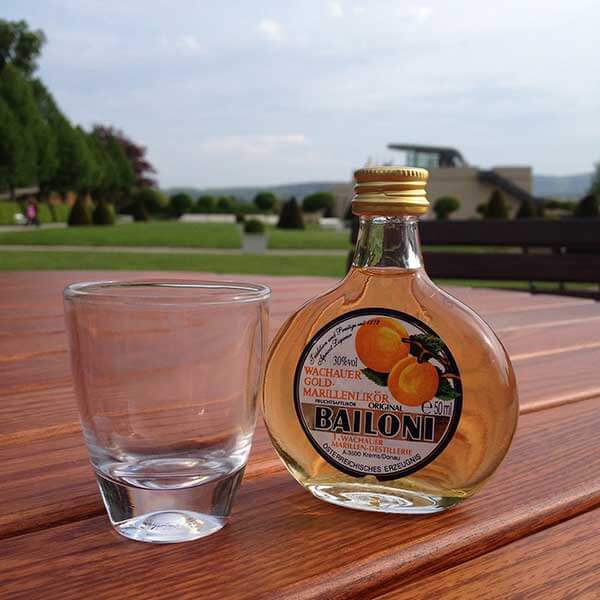There’s nothing better than diving headfirst into a new destination, especially by tasting and sipping the local fare along the way. Most of the time, you’ll find that food and/or drink is woven into a certain landmark’s history making it a key player!
The Danube is a historic river in Europe’s history, flowing through most of Central Europe from the Black Forest to the Black Sea. Since it passes through several different villages, towns and cities, the range of food and drink options is no laughing matter! Whet your appetite with this list of nine things to eat and drink along the Danube.
TO DRINK:
Elderflower cordial.

Made using the flowers of the European elder, elderflower can be made into a cordial, syrup or concentrated squash. To make the popular cordial, the flower heads are collected when their buds have only just opened (so that the fragrance isn’t tainted) then steeped in a concentrated sugar solution to infuse the elderflower flavour, along with lemon juice. Once strained, it pairs well with still or sparkling water, tonic or even gin! Found on many Budapest café and restaurant menus, it’s the perfect refreshment on a hot summer’s day.
Wines.

With rolling hillsides and plenty of sunshine, it’s no wonder that the Wachau Valley produces some of the world’s finest Rieslings and Gruner Veltliners. The less common Gruner Veltliner is a crisp, dry white wine that is best drunk early (Austrians prefer not to age their wines). The temperature change from day to night plays an important part in the production of these complex white wines. Make sure to partake in a wine tasting while there!
Liqueurs.

The tiny of Melk is predominantly famous for its formidable Abbey, in operation since 1089. However, the Abbey also has its own small liquor industry that produces schnapps, spirits and liqueurs. In particular, their delicious apricot liqueur is famous in Austria. Enjoy on its own or as a decadent accompaniment over ice cream!
Coffee.

Did you know that Vienna’s coffee culture is so legendary that it’s listed as an “intangible cultural heritage” by UNESCO? For coffee lovers, you won’t have to look far to find a café. Depending on your preference, you may like to order a melange (small espresso served in a large cup with steamed milk and froth); a franziskaner (served with whipped cream); or if you’re feeling particularly naughty, a Mozart (double espresso with whipped cream and a glass of sherry on the side).
TO EAT:
Hungarian sausage.

Upon first impressions, you’ll be gobsmacked by the array of Hungarian cured sausage on offer at the Budapest Central Market. Made with almost every kind of animal you can think of – from the standard pork, to donkey, chicken and even goose! – the key difference is the amount of paprika used during the curing process. Chat to the stallholders to find out about what’s on offer, and they’ll only be too happy to share their story with you.
Pretzel dumplings.

Also known as Breznknödel, pretzel dumplings are a variation on the traditional Bavarian bread dumplings. Made with pretzels once they’ve hit that hard and crusty stage, it’s a great way to use old bread. Served as a tasty side to a traditional roast or a braised meat dish, as part of a creamy mushroom or meat stew, or incorporated into a salad – there are never-ending options to how you enjoy your pretzel dumplings!
Carnival doughnuts.

The famous faschingskrapfen are traditionally baked at Fasching which is at the end of February. The German and Viennese Carnival is similar to Mardi Gras, and what better way to celebrate than with doughnuts? These can be filled with jam, Nutella or Bavarian cream. If you buy a box at the bakery, one gets filled with mustard as a ‘surprise’! But never fear…even if you aren’t visiting around Carnival time, you can also find faschingskrapfen in certain parts of Germany and Austria year-round.
Shredded pancakes.

Fondly called kaiserschmarrn, the name is broken down into kaiser (emperor) and schmarren (a scrambled or shredded dish). The Austrian emperor Franz Joseph I loved the fluffy shredded pancake. While frying, the pancake is split into pieces and sprinkled with icing sugar. Other options for toppings include nuts, fruit, jam and more! It’s a filling, hot dessert enjoyed by many.
Linzer cookies.

In a genius move, Linzer cookies are the cookie version of the Austrian Linzertorte. As the name suggests, these two sweet treats hail from the city of Linz, situated along the riverbanks of the Danube. Similar to the dough of the torte (tart), the cookies are made with an almond dough and sandwiched together with a fruit jam. The moreish flavour comes from toasting the almonds beforehand, adding a richness to it like no other. We bet you can’t stop at just one!
Click here to start planning your dream Danube river cruise holiday today.




